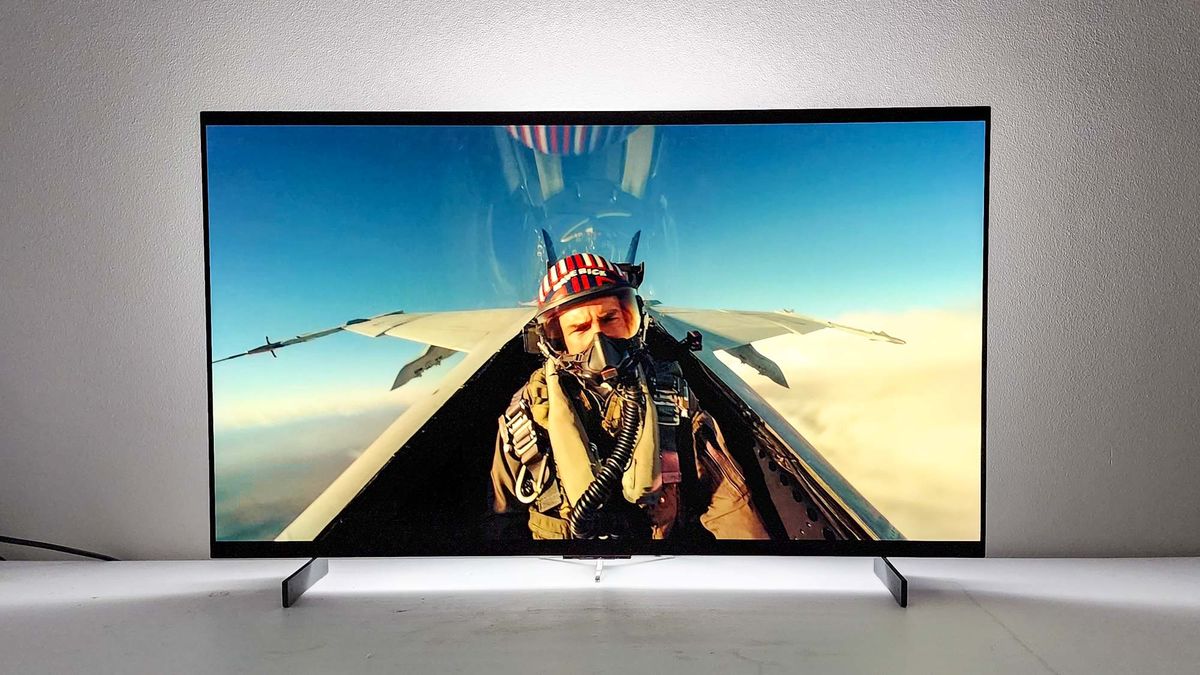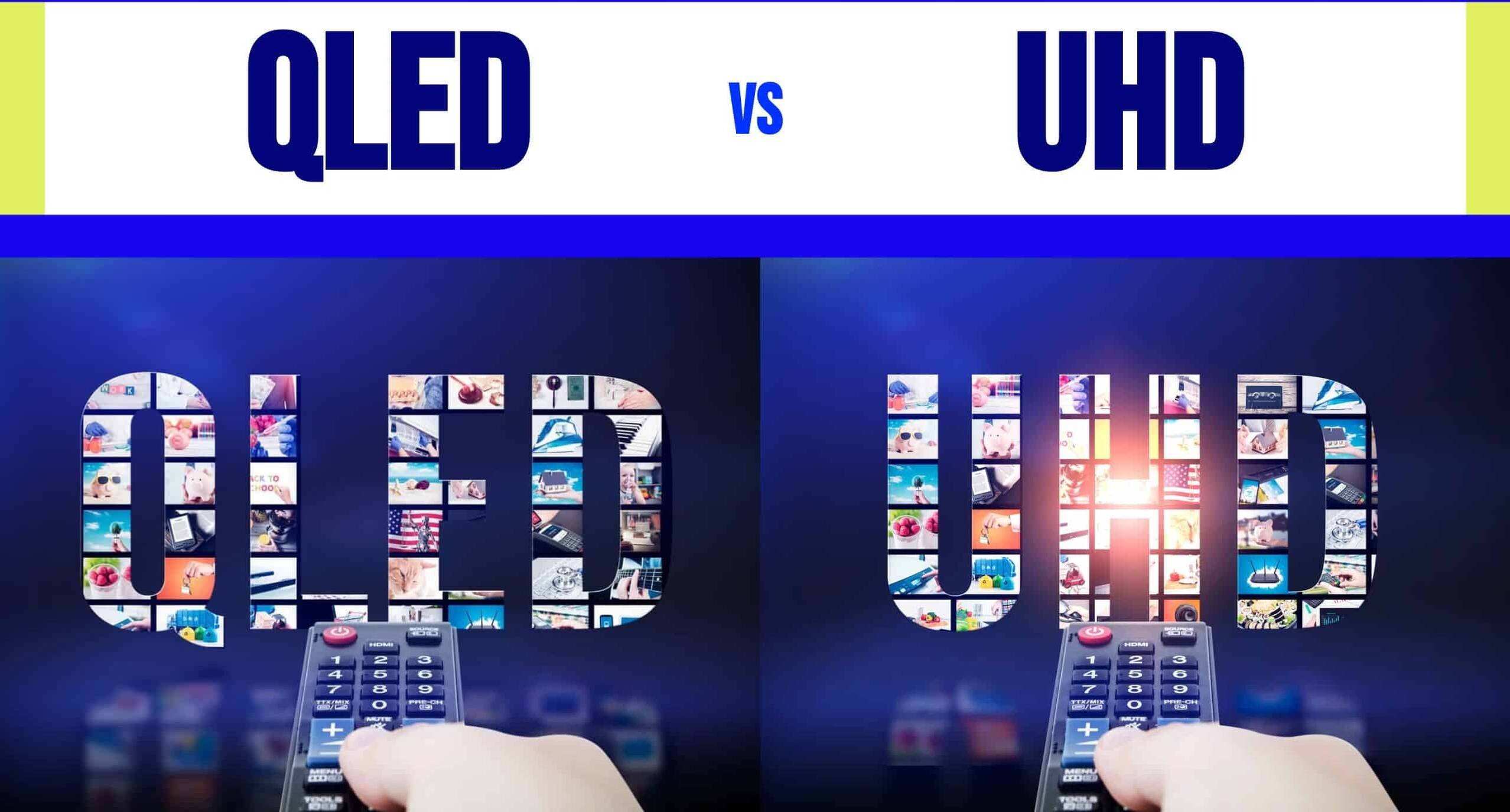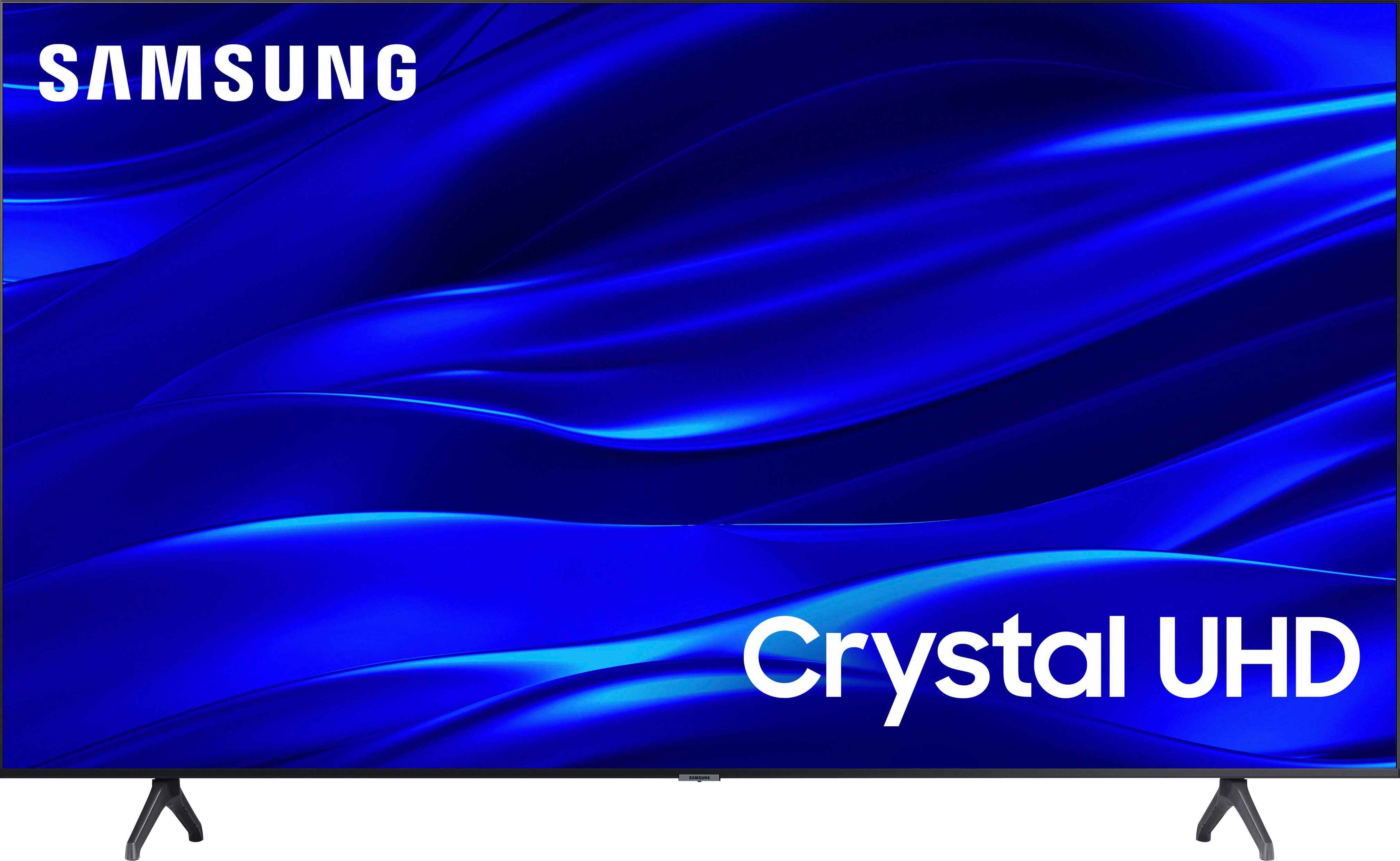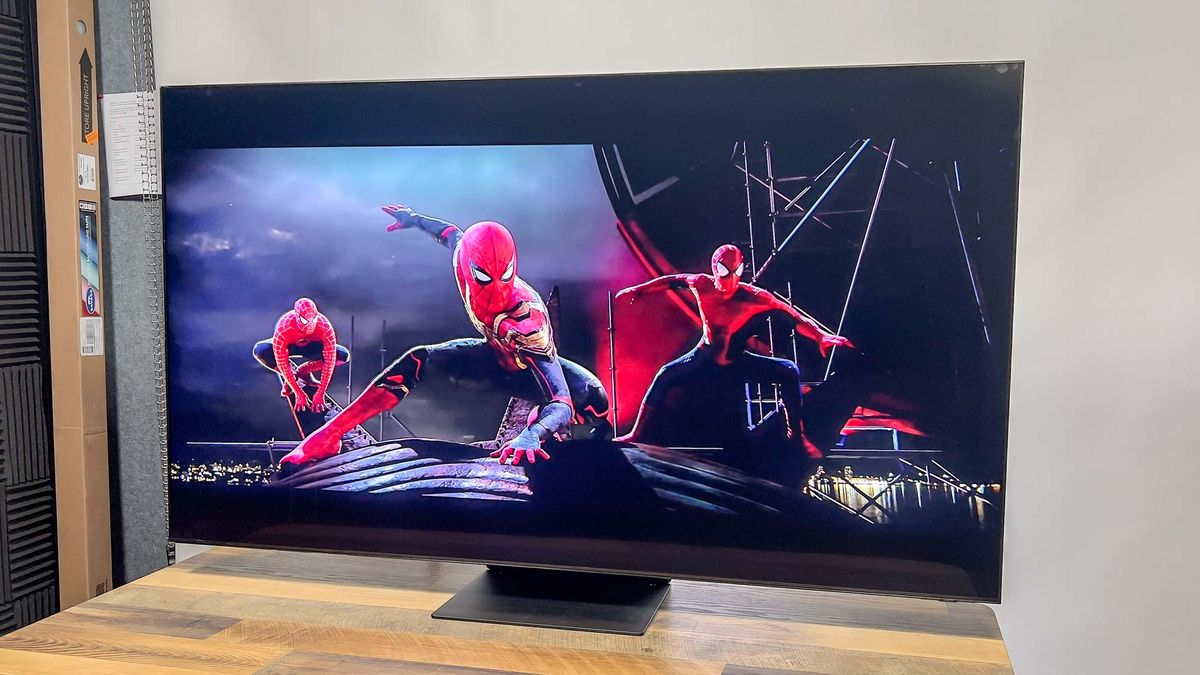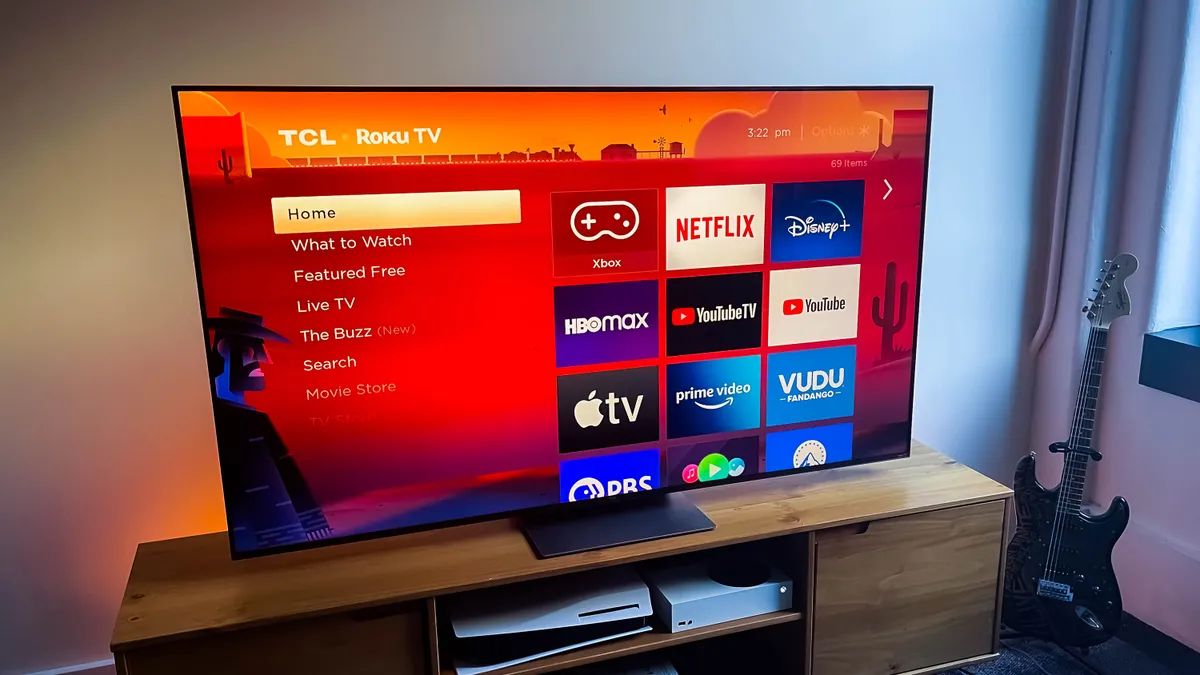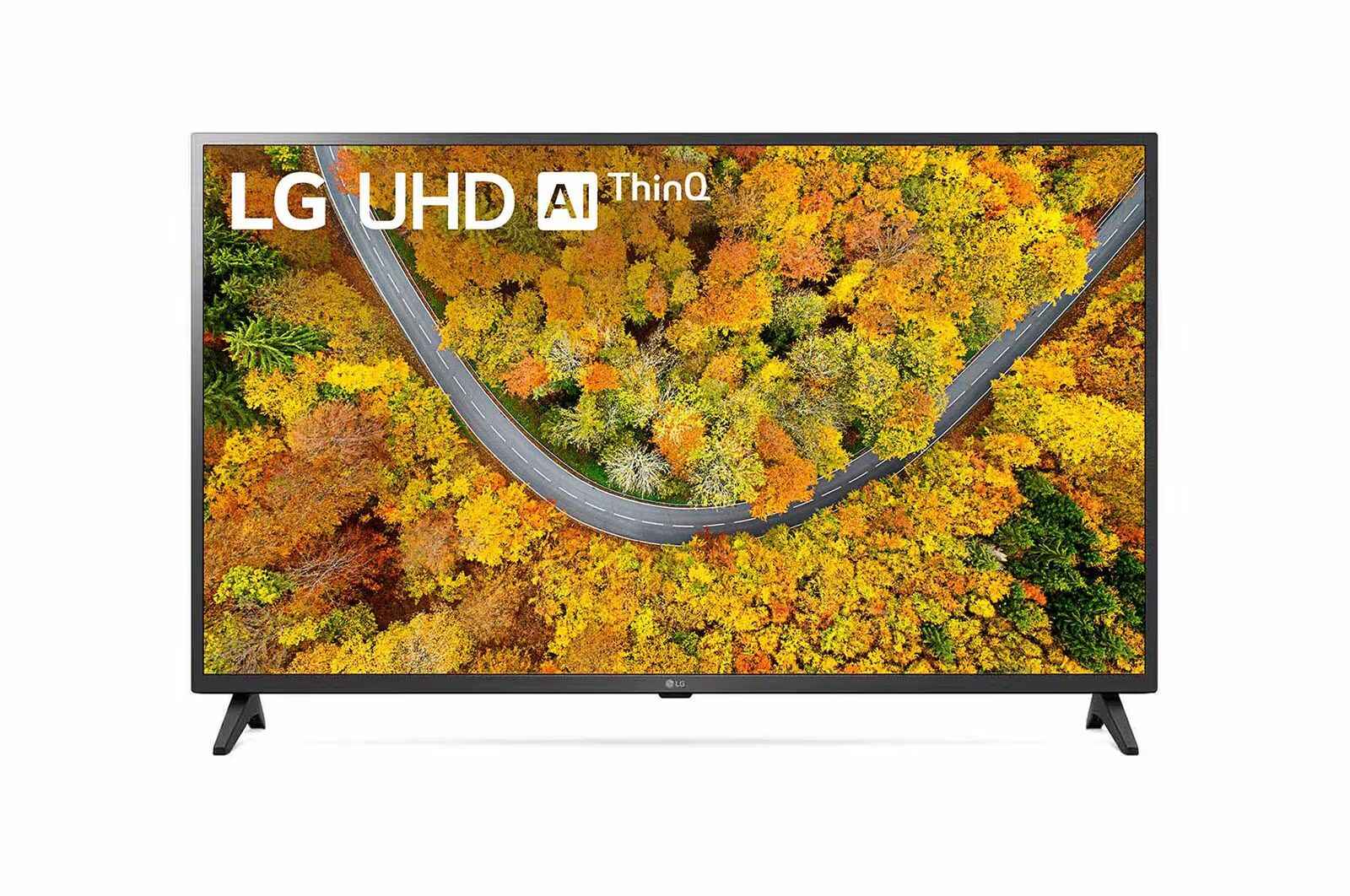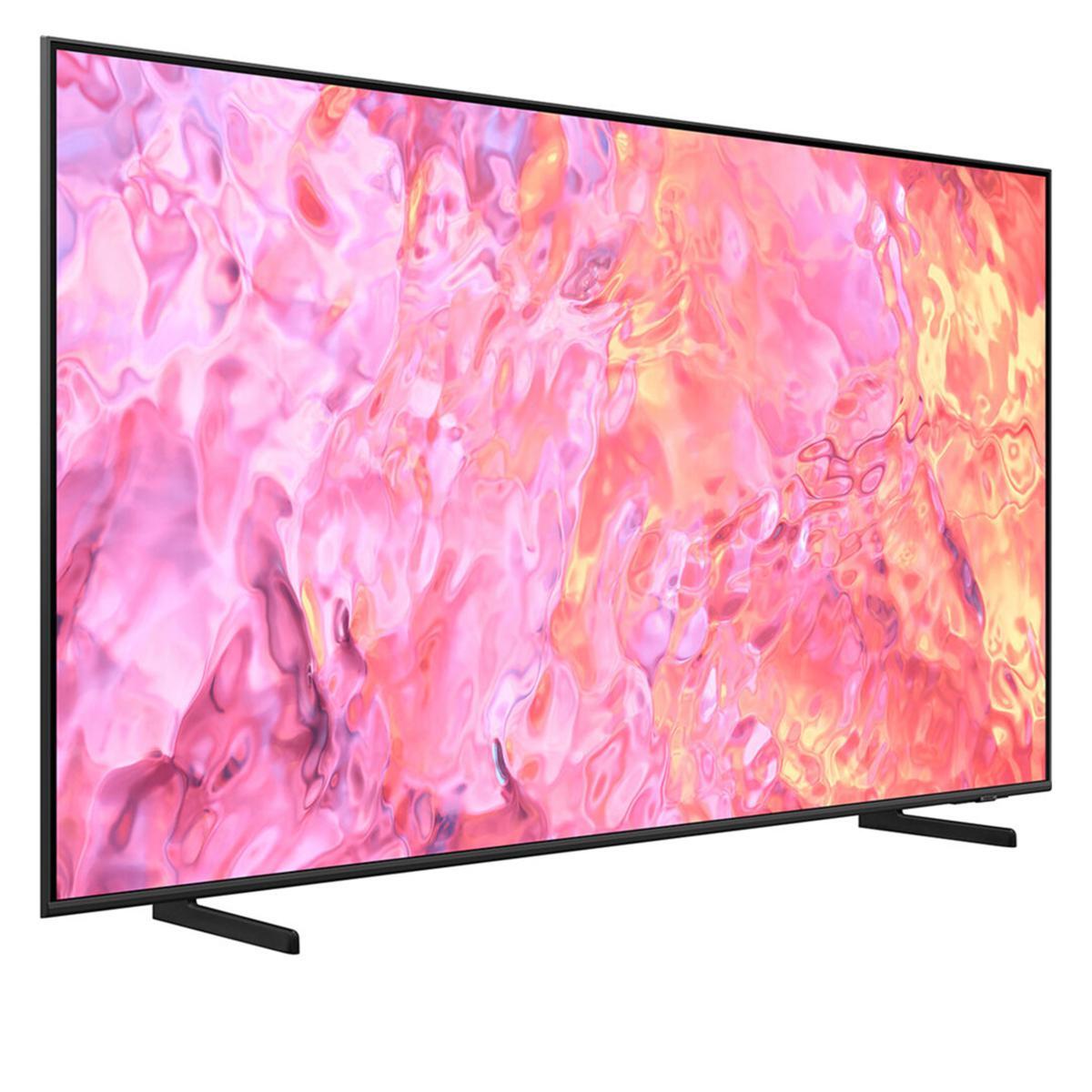Introduction
The world of television technology is constantly evolving, and it can be challenging to keep up with all the new terms and features. Two commonly used terms in the TV market are UHD and LED – but what exactly do they mean, and what is the difference between them?
UHD stands for Ultra High Definition, while LED stands for Light Emitting Diode. These terms refer to different aspects of a TV’s technology and have a significant impact on the viewing experience. Understanding the differences between UHD and LED TVs can help you make an informed decision when shopping for a new TV.
UHD TVs are known for their exceptional picture quality, offering four times the resolution of Full HD TVs. This means that UHD TVs have a higher pixel count, resulting in sharper and more detailed images. On the other hand, LED TVs use LED backlighting technology, which enhances the brightness and color accuracy of the displayed content.
While UHD and LED are distinct features, they are not mutually exclusive. In fact, many UHD TVs use LED technology for backlighting. However, it is essential to note that not all LED TVs are UHD, as LED refers to the lighting technology rather than the display resolution.
Both UHD and LED TVs offer distinct advantages and considerations, which we will explore in further detail. This comparison aims to provide you with a comprehensive understanding of the differences between UHD and LED TVs, giving you the knowledge to choose the right TV for your specific needs.
UHD TV
UHD TVs, also known as 4K TVs, have become increasingly popular in recent years due to their stunning picture quality. UHD stands for Ultra High Definition, and it refers to the resolution of the television screen. While traditional Full HD TVs have a resolution of 1920×1080 pixels, UHD TVs have a resolution of 3840×2160 pixels, providing four times the number of pixels.
This increased pixel count results in sharper and more detailed images. Whether you are watching movies, playing video games, or streaming your favorite TV shows, UHD TVs offer an immersive viewing experience with lifelike clarity. The finer details and textures truly come to life on the screen, making UHD TVs ideal for those who enjoy high-quality visuals.
Another significant advantage of UHD TVs is their compatibility with HDR (High Dynamic Range) content. HDR technology enhances the color accuracy and contrast of the images, creating a more vibrant and realistic picture. With HDR support, UHD TVs can display a wider range of colors and a greater level of detail in both bright and dark scenes.
Furthermore, UHD TVs often come equipped with advanced upscaling technology. This feature allows lower resolution content, such as DVDs or streaming videos, to be upscaled and optimized for the UHD screen. As a result, even non-UHD content can appear sharper and more detailed on a UHD TV.
However, it is worth noting that to fully appreciate the benefits of a UHD TV, you need access to UHD content. Many streaming services, such as Netflix and Amazon Prime Video, now offer a wide selection of 4K UHD movies and TV shows. Additionally, some Blu-ray discs and video games are also available in UHD format.
When it comes to connectivity, UHD TVs often feature multiple HDMI ports with HDCP 2.2 support, allowing you to connect various devices, such as gaming consoles and Blu-ray players, without compromising on image quality.
In summary, UHD TVs offer an exceptional viewing experience with their high resolution, impressive picture quality, HDR support, and advanced upscaling technology. If you are a fan of immersive visuals and enjoy watching UHD content, a UHD TV might be the perfect choice for you.
LED TV
LED TVs, short for Light Emitting Diode TVs, have become the standard in the television industry. Unlike traditional LCD TVs that use fluorescent backlighting, LED TVs utilize LED lights for backlighting, resulting in various advantages and improvements in picture quality.
One of the main advantages of LED TVs is their superior brightness. LED backlighting produces brighter and more vibrant images compared to traditional LCD TVs. This increased brightness allows for better visibility in well-lit environments and enhances color accuracy, making the images on the screen appear more vivid and lifelike.
LED TVs also offer excellent energy efficiency. LED lights consume less power than the fluorescent lights used in older LCD TVs, resulting in lower electricity consumption and reduced energy costs. This makes LED TVs a more environmentally friendly choice while also saving you money in the long run.
The use of LED backlighting technology also allows for a slimmer and more compact design. LED TVs are typically thinner and lighter compared to older TV models, making them easier to mount on walls or place on TV stands. This slim profile adds an aesthetic appeal to any space and provides more flexibility in terms of placement options.
Additionally, LED TVs often feature advanced display technologies such as local dimming. This technology allows specific areas of the screen to be dimmed or even turn off entirely, resulting in deeper and more accurate blacks. This significantly enhances contrast and makes dark scenes appear more detailed and immersive.
LED TVs also have a wider viewing angle compared to other display technologies, ensuring that the picture quality remains consistent even when viewed from different angles. This is beneficial for larger living rooms or when watching TV with a group of people as everyone can enjoy the same high-quality visuals.
When it comes to connectivity options, LED TVs usually provide multiple HDMI and USB ports for connecting various devices such as gaming consoles, soundbars, and streaming devices. This allows for easy integration of external devices and expands the functionality of your TV.
To summarize, LED TVs offer superior brightness, excellent energy efficiency, slim design, local dimming, wide viewing angles, and versatile connectivity options. If you prioritize brightness, energy savings, and an immersive viewing experience, an LED TV might be the ideal choice for you.
Resolution
Resolution is a crucial factor to consider when comparing UHD and LED TVs. It refers to the number of pixels that make up the display, determining the level of detail and sharpness of the images.
UHD TVs, also known as 4K TVs, have a resolution of 3840×2160 pixels. This means that there are four times more pixels compared to a Full HD TV, resulting in incredibly sharp and detailed visuals. UHD TVs offer a more immersive viewing experience, and you can appreciate the finer details in movies, TV shows, and games.
On the other hand, LED TVs come in various resolutions, including Full HD (1920×1080 pixels) and even HD (1280×720 pixels). While these resolutions are lower than UHD, they still provide excellent picture quality, especially on smaller screen sizes. LED TVs with Full HD resolution can deliver vibrant and detailed images, making them a popular choice for those on a budget or looking for a TV for smaller spaces.
It is essential to note that the difference in resolution becomes more noticeable as the screen size increases. If you plan to purchase a larger TV, such as 55 inches or above, opting for a UHD TV will ensure that you get the best possible detail and clarity.
Additionally, the availability of content in different resolutions should be considered. While UHD content is becoming more prevalent, it is still not as widely available as Full HD or HD content. However, many streaming services, Blu-ray discs, and video games now offer UHD options, allowing you to take full advantage of a UHD TV’s resolution.
In summary, UHD TVs have a higher resolution, providing four times the number of pixels compared to Full HD and HD resolutions found in many LED TVs. If you want the absolute best in terms of detail and sharpness, and plan to watch UHD content, the superior resolution of a UHD TV is the way to go. However, if you have budget constraints or prefer a smaller screen size, LED TVs with Full HD or HD resolution can still deliver excellent picture quality.
Picture Quality
Picture quality is a crucial aspect to consider when choosing between UHD and LED TVs. While both types offer impressive visuals, there are distinct differences in the way they achieve picture quality.
UHD TVs, with their high resolution, provide exceptional picture quality. The increased pixel count of UHD TVs allows for sharper and more detailed images, making them ideal for those who appreciate the finer details in movies, TV shows, and games. UHD TVs also often come equipped with advanced upscaling technology, which enhances the quality of non-UHD content to appear sharper and more refined on the UHD screen.
LED TVs, on the other hand, excel in brightness and color accuracy. The LED backlighting technology used in these TVs ensures vibrant and vivid colors, making the images on screen pop. LED TVs are known for their excellent contrast levels, which enhance the differentiation between dark and bright areas on the screen. This creates a visually striking experience, particularly during action-packed scenes or when watching content with rich colors.
Another factor that contributes to picture quality is the presence of High Dynamic Range (HDR) technology. HDR enhances the color accuracy and contrast, resulting in more realistic and visually stunning images. Many UHD and LED TVs now come with HDR support, which allows for a wider color gamut, deeper blacks, and brighter highlights.
Ultimately, the choice between UHD and LED TVs will depend on your preferences. If you prioritize sharpness and detail, along with the ability to display UHD content, a UHD TV will offer the best picture quality. On the other hand, if you value vibrant colors, excellent contrast, and impressive brightness, an LED TV will deliver an immersive visual experience.
It’s worth noting that picture quality can also vary between different brands and models within UHD and LED TVs. It is recommended to read reviews, compare specifications, and even visit a showroom to see the picture quality firsthand before making a decision.
In summary, UHD TVs provide exceptional picture quality with their high resolution and advanced upscaling technology, while LED TVs excel in brightness, color accuracy, and contrast. Both types of TVs now commonly support HDR for improved picture quality. Consider your preferences and the type of content you watch to choose the TV that will provide the best picture quality for your needs.
Display Technology
The display technology utilized in UHD and LED TVs plays a critical role in determining the overall viewing experience. While both types of TVs offer impressive visuals, they employ different display technologies to achieve their results.
UHD TVs utilize LCD (liquid crystal display) technology with LED backlighting. The LED backlighting helps enhance the brightness and color accuracy of the images on the screen. These TVs typically use an array of LEDs located behind the LCD panel to provide uniform illumination across the entire display. This combination of LCD and LED technology allows UHD TVs to deliver sharp and detailed images with vibrant colors.
On the other hand, LED TVs rely solely on LED technology for both the backlighting and image display. LED displays use an array of LEDs directly behind the screen to produce the images. This technology provides excellent brightness, color accuracy, and contrast, resulting in vivid and lifelike visuals. LED displays also generally have a faster response time, minimizing motion blur during fast-paced scenes, making them a suitable choice for gaming and sports enthusiasts.
Another noteworthy display technology is OLED (organic light-emitting diode). OLED TVs are distinct from both UHD and LED TVs, as they use self-emissive pixels that emit light individually. This allows each pixel to turn completely off, resulting in deep blacks and infinite contrast ratios. OLED displays offer incredibly vibrant colors and wide viewing angles, providing an immersive and cinematic visual experience.
When comparing UHD and LED TVs, it’s important to consider the specific display technology used by different models within each category. Factors such as color accuracy, contrast ratio, viewing angles, and motion handling can vary between televisions of the same type. Reading reviews and comparing specifications can help you determine the display technology that best suits your preferences and needs.
In summary, UHD TVs use LCD panels with LED backlighting, while LED TVs rely on LED technology for both backlighting and display. Both types of TVs offer impressive visuals, but OLED displays take it even further with their self-emissive pixels. Understanding the display technology behind different types of TVs can help you make an informed decision based on your priorities for color accuracy, contrast, motion handling, and viewing angles.
Contrast Ratio
When it comes to delivering a visually captivating experience, contrast ratio is an important factor to consider in UHD and LED TVs. Contrast ratio refers to the difference between the brightest whites and the darkest blacks that a TV can display. A higher contrast ratio contributes to more vibrant and lifelike images.
UHD TVs typically have a higher contrast ratio compared to LED TVs. The combination of high resolution and advanced display technologies used in UHD TVs allows for greater differentiation between bright and dark areas on the screen. This results in more depth and detail in the images, especially during scenes with extreme light and shadow contrasts.
LED TVs, on the other hand, offer excellent contrast ratios as well. LED backlighting technology allows for precise control of the lights, enabling deep blacks and brighter whites. Local dimming is a feature commonly found in LED TVs that enhances contrast further by individually adjusting the brightness of specific areas on the screen, resulting in improved black levels and overall picture quality. LED TVs generally provide impressive contrast ratios, especially in models with high-end display panels.
It’s worth mentioning that OLED TVs have taken contrast ratios to another level. With individually lit pixels, OLED displays can achieve an infinite contrast ratio. This means that the blacks appear truly black, as the pixels in those areas emit no light at all. The ability to have deep blacks alongside vibrant colors results in stunning images with incredible depth and contrast.
When choosing between UHD and LED TVs, it’s essential to consider your preferences for contrast ratio. If you value deep blacks and excellent differentiation between bright and dark areas, UHD TVs or OLED TVs will offer the best results. However, high-quality LED TVs with local dimming can still provide impressive contrast ratios, making them suitable choices for those seeking a rich visual experience at a more affordable price point.
In summary, both UHD and LED TVs can deliver impressive contrast ratios, with OLED TVs boasting an infinite contrast ratio. UHD TVs, with their high resolution and advanced display technologies, provide excellent differentiation between bright and dark areas. LED TVs, particularly models with local dimming, offer impressive contrast ratios as well, enhancing the viewing experience. Consider your preference for deep blacks and contrast performance when making a decision between UHD and LED TVs.
Viewing Angle
The viewing angle refers to the maximum angle at which you can still clearly see the images on the TV screen without any loss in color accuracy or contrast. A wider viewing angle ensures that everyone in the room can enjoy the same high-quality visuals, regardless of their seating position.
UHD TVs generally have a narrower viewing angle compared to LED TVs. This is due to the limitations of the LCD panel technology used in UHD TVs. When viewed off-center, the colors on UHD TVs can appear washed out, and the contrast may decrease. This means that if you are not sitting directly in front of the UHD TV, you may experience a reduction in the overall picture quality.
On the other hand, LED TVs offer wider viewing angles. LED technology provides better color accuracy and contrast even when viewed from the side. This is particularly advantageous for those who have larger living rooms or frequently watch TV with a group of people.
It is important to note that the exact viewing angle performance can vary between different models and brands within UHD and LED TVs. Some UHD TVs now incorporate advanced panel technologies or additional features to improve the viewing angle. For example, IPS (In-Plane Switching) panels are known for having wider viewing angles and better color accuracy than traditional LCD panels.
If a wide viewing angle is a priority for you, OLED TVs outperform both UHD and LED TVs. OLED displays provide consistent picture quality from almost any angle. Each pixel in an OLED display is self-emissive, meaning it emits its own light, resulting in unparalleled viewing angles and minimal color distortion.
To summarize, LED TVs generally offer wider viewing angles compared to UHD TVs. However, it is essential to consider the specific model and brand, as some UHD TVs may incorporate advanced panel technologies to enhance the viewing angle. If a wide viewing angle is critical, OLED TVs provide the best performance, ensuring consistent picture quality from any position in the room.
Energy Efficiency
Energy efficiency is an important consideration when comparing UHD and LED TVs. With rising energy costs and increased environmental awareness, choosing an energy-efficient TV can have long-term benefits both for your wallet and the planet.
LED TVs are known for their excellent energy efficiency. LED lights, which are used for backlighting in these TVs, consume less power compared to the fluorescent lights used in older LCD TVs. This results in lower electricity consumption and reduced energy costs. LED TVs are designed to be energy-efficient without compromising on the overall picture quality and performance.
UHD TVs have made significant strides in energy efficiency compared to earlier generations of televisions. Many UHD TVs now feature advanced power-saving features and technologies, such as automatic brightness adjustment based on ambient light conditions and energy-saving modes. These features help minimize energy consumption when the TV is not in use or when the content being displayed does not require maximum brightness.
It’s important to note that energy efficiency can vary between different models and brands within UHD and LED TVs. Energy consumption can depend on factors such as the TV size, brightness settings, and usage patterns. It’s advisable to check the energy efficiency ratings and certifications of the TVs you are considering, such as ENERGY STAR, to ensure you are selecting a more energy-efficient model.
In summary, LED TVs are generally more energy-efficient compared to UHD TVs due to their LED backlighting technology. However, UHD TVs have also incorporated energy-saving features to improve their energy efficiency. When choosing a TV, it’s worthwhile to look for energy-efficient models to reduce your energy consumption and contribute to a more sustainable lifestyle.
Price
Price is a significant factor to consider when comparing UHD and LED TVs. The cost of a TV depends on various factors, including the brand, size, features, and technology used.
Generally, LED TVs tend to be more affordable compared to UHD TVs. LED technology has been around for a longer time and is more widely available, resulting in a larger selection of models at different price points. LED TVs offer a range of options to fit different budgets, making them a popular choice for those who want a quality TV without breaking the bank.
On the other hand, UHD TVs tend to be more expensive than LED TVs. The higher resolution and advanced display technologies of UHD TVs contribute to their higher price tags. Additionally, UHD content production and availability have increased over time, making UHD TVs a more desirable choice for those who want to future-proof their entertainment setup and enjoy the best possible picture quality.
It’s worth noting that the price gap between UHD and LED TVs has been narrowing as UHD technology becomes more mainstream. Prices for UHD TVs have become more affordable over the years, and there are now budget-friendly options available in the market. However, it’s essential to consider the trade-off between price and the specific features and quality you desire in a TV.
When comparing prices, it’s also helpful to consider the cost over the TV’s lifespan. Energy efficiency should be taken into account, as a more energy-efficient TV can result in long-term cost savings on electricity bills. Additionally, factors like warranty, customer support, and reputation of the manufacturer should be considered to ensure you are getting a reliable and quality product.
In summary, LED TVs generally have a lower price compared to UHD TVs, making them a more budget-friendly option. However, prices for UHD TVs have become more affordable in recent years, and there are budget-friendly choices available. When comparing prices, consider the specific features, quality, energy efficiency, and long-term cost savings to make an informed decision that suits your budget and requirements.
Conclusion
When it comes to choosing between UHD and LED TVs, it’s important to consider several factors to make an informed decision. Both UHD and LED TVs offer their unique advantages and considerations.
UHD TVs, with their high resolution and advanced technologies, deliver exceptional picture quality and detail. They are ideal for those who prioritize sharpness and enjoy UHD content. UHD TVs also tend to offer wider compatibility with HDR content, further enhancing the viewing experience.
LED TVs, on the other hand, provide excellent brightness, color accuracy, and contrast. They are known for their energy efficiency, wide viewing angles, and affordability. LED TVs are a popular choice for those who value vibrant colors and immersive visuals.
It’s worth noting that OLED technology stands out in terms of contrast ratio, viewing angles, and overall picture quality, but it comes at a higher price point.
Ultimately, the right choice between UHD and LED TVs depends on your preferences, budget, and the specific features that matter most to you. Consider factors such as resolution, picture quality, display technology, contrast ratio, viewing angles, energy efficiency, and price when making your decision.
Before purchasing a TV, it’s a good idea to research different models, read reviews, and compare specifications. Additionally, visiting a showroom and seeing the TVs in person can provide a better sense of their performance and visual appeal.
Whether you decide on a UHD TV or an LED TV, both options offer impressive visual experiences and can elevate your entertainment setup. With the right choice, you can enjoy your favorite movies, TV shows, and games with enhanced clarity, colors, and immersion.









